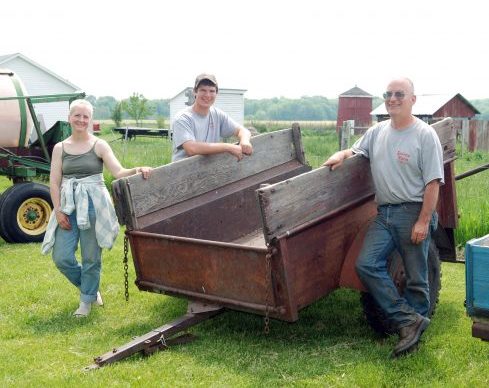Rapini as a cultivated vegetable most likely descended from a wild herb that was related to turnips growing in either China or the Mediterranean region. Napini ranges in color from green to purple, depending on the variety of kale it is from, but will always turn dark green when cooked.
Napini and rapini are excellent sources of vitamins A, C, and K, as well as Potassium, Calcium, and Iron. They’re also good sources of complex-B vitamins, manganese, and phosphorus. Other raab (from collards, cabbage, mustard greens, etc.) are good sources of similar vitamins and minerals.
Buying & Storing
When buying rapini, napini, and raab, (hereafter referred to as raab), consider how quickly you’re going to use it. Raab with flowers that are starting to blossom won’t last as long as raab with tightly closed buds. Flowering raab is particularly delicious as it tends to be sweeter.
Raab is typically found in bunches, so if you aren’t going to use it immediately, avoid bunches that have damaged stems from being tightly rubber banded or twist-tied. Damage to the stems will cause the raab to go bad faster. If you can find loose raab, even better! Place raab in a plastic bag or wrap it in damp paper towels and keep it in the refrigerator. If you don’t plan to use your raab in the first few days, re-dampen the paper towels. Raab can last up to 1-2 weeks in the refrigerator.
Cooking
Lemony Broccoli Rabe with White Beans | Rapini (Ραπίνι) | Broccoli Rabe with Caramelized Onions | Italian-Style Garlicky Broccoli Rabe Aka Rapini | Rapini and Besciamella Orecchiette (Broccoli and White Sauce Pasta) | Sautéed Kale Florets (Aka Napini)
Preparation – raab is incredibly easy to prepare. Wash your raab under running water, and let it sit in a colander to dry. If you don’t have a colander, spread the raab out on a towel and let it dry for a little. Trim off the bottoms of the stems about ¼ to ½ an inch and remove any damaged stems or parts.
All raab is best cooked simply. Some people find raab delicious raw, but its pungent flavor can overpower a dish so most of the time it is sautéed, roasted, or grilled beforehand to mellow the sharpness just a bit.
Roast – roast raab in the oven anywhere from 375°F to 450°F. Place the whole raab shoots in a bowl, drizzle with olive oil, salt and pepper. Use your hands to toss the raab so that it is lightly coated in olive oil. Spread the raab out on a rimmed baking sheet and roast for about 7-10 minutes. At 425°F, the raab should be done in about 10 minutes. Once the raab is tender and the leaves have crisped up, it’s ready. Dress the raab with grated parmesan or other hard, salty cheese, lemon juice, or apple cider vinegar.
Grill – when grilling raab, follow the same directions as roasting, just roast the raab over a medium-hot portion of your grill, and turn every few minutes to get an even char. Place the raab across the grill grate (perpendicular), otherwise the thin raab might fall through the grill.
Sauté – place a little oil or butter in a skillet or sauté pan over medium-high heat and let it warm. Once the pan is hot, add the raab, and toss or stir it every minute or so until the raab is tender and brown. Sauté raab as full stems, or chop into inch-long sections for use in stir-fry, omelets, frittatas, pasta, etc.
Soup – add raab to soups that call for kale or other greens. Quickly cook the raab in boiling water, then drop it into ice water (blanching) which will help to make the stalks tender before adding it to the soup.
Pickle – for long-term storage, quick pickle raab and store it in olive oil in the refrigerator. Pickled raab is delicious as an appetizer, on a meat and cheese board, or on sandwiches.





